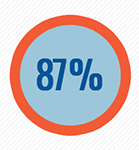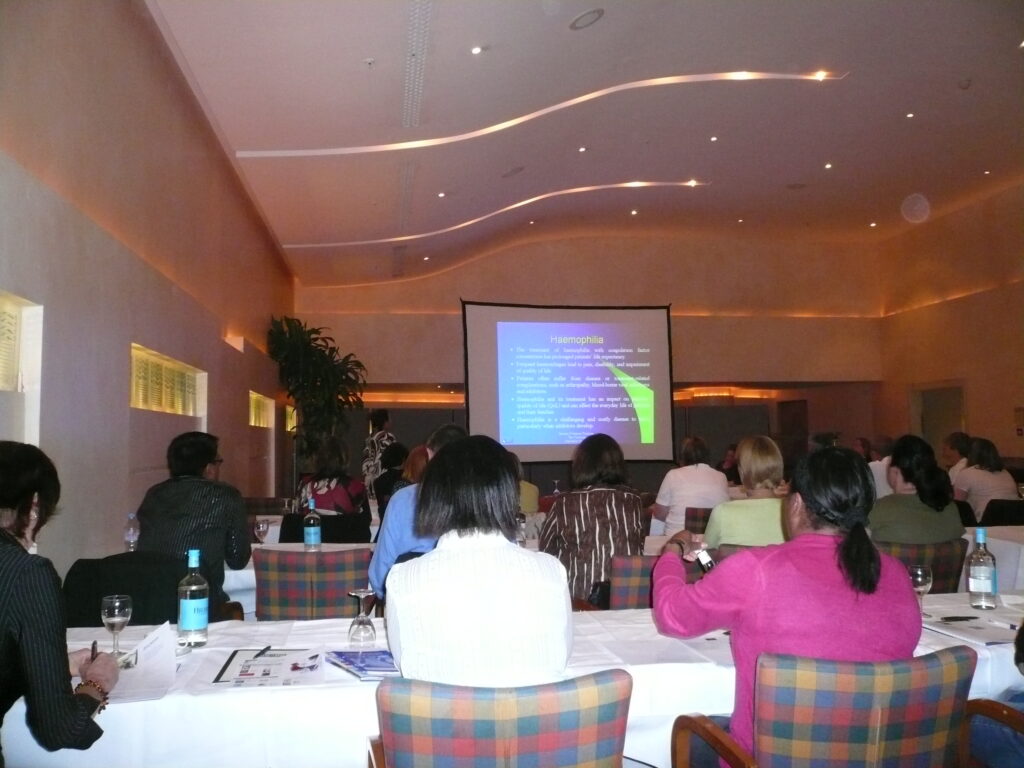ALPHANATE.com answers some of the most common hemophilia A questions in one convenient location.

On the new site, patients and caregivers can learn exactly what hemophilia A is; why a plasma-derived FVIII could be a treatment option; and details about inhibitors, the greatest challenge in hemophilia A treatment.1,2 ALPHANATE.com also outlines how patients can identify, manage, and prevent bleeds. In other words, ALPHANATE.com is not just about providing patients and caregivers with information, it’s about helping people with hemophilia A or VWD.
Patient
Support & Resources
All patients should have access to proper medications, resources, and strong support. With this commitment to care in mind, Grifols offers Factors for Health, a comprehensive patient support and assistance program. The Factors for Health program offers:
- $0 Copay Assistance Program, which may cover out-of-pocket expenses not
covered or partially covered by insurance
- Free Trial Program, for eligible patients new to ALPHANATE
- Benefits investigation and support services
- Patient Assistance Program
- Care Coordination, helping patients gain access to and remain on
ALPHANATE
Other resources on thenew ALPHANATE.com include a Doctor Discussion Guide to prepare you to get the most out of your conversations with your doctor and a blog with tips for living with and managing a bleeding disorder.
ALPHANATE
ALPHANATE is an FDA-approved human plasma-derived treatment for adult and pediatric patients with hemophilia A or VWD. The manufacturing process for ALPHANATE is specifically designed to preserve FVIII and VWF together, the way they are naturally found in the body.3
Since product launch in 1997, there has never been a confirmed case of virus or prion transmission with ALPHANATE. Grifols is committed to safety before, during, and after ALPHANATE manufacturing. In fact, ALPHANATE is manufactured using a 10-steps-to-safety process, with full traceability from donor to patient.
Because ALPHANATE is made from human plasma, it may carry a risk of transmitting infectious agents, eg, viruses, the variant Creutzfeldt-Jakob disease (vCJD) agent, and, theoretically, the Creutzfeldt-Jakob disease (CJD) agent, despite
steps designed to reduce this risk.
To meet the needs of a variety of patients, ALPHANATE is offered in a range of convenient vial sizes with low diluent volume.3
Visit Plasma City on the new ALPHANATE.com to see how others with hemophilia A and VWD have been building foundations for success with ALPHANATE for 20 years. And don’t forget to
sign up to stay up to date on what’s happening in Plasma City.
Indications
ALPHANATE® (antihemophilic factor/von Willebrand factor complex [human]) is indicated for:
- Control and prevention of bleeding episodes and perioperative management in adult and
pediatric patients with factor VIII (FVIII) deficiency due to hemophilia A
- Surgical and/or invasive procedures in adult and pediatric patients with von Willebrand
disease (VWD) in whom desmopressin (DDAVP) is either ineffective or
contraindicated. It is not indicated for patients with severe VWD (type 3)
undergoing major surgery
Important Safety Information
ALPHANATE is contraindicated in patients who have manifested life-threatening immediate hypersensitivity
reactions, including anaphylaxis, to the product or its components. Anaphylaxis and severe hypersensitivity reactions are possible with ALPHANATE. Discontinue use of ALPHANATE if hypersensitivity symptoms occur, and initiate appropriate
treatment. Development of procoagulant activity-neutralizing antibodies (inhibitors) has been detected in patients
receiving FVIII-containing products. Carefully monitor patients treated with AHF products for the development of FVIII inhibitors by appropriate clinical observations and laboratory tests.
Thromboembolic events have been reported with AHF/VWF complex (human) in VWD patients, especially in the
setting of known risk factors. Intravascular hemolysis may occur with infusion of large doses of AHF/VWF complex (human).
Rapid administration of a FVIII concentrate may result in vasomotor reactions.
Because ALPHANATE is made from human plasma, it may carry a risk of transmitting infectious agents, eg, viruses, the variant Creutzfeldt-Jakob disease (vCJD) agent, and, theoretically, the Creutzfeldt-Jakob disease (CJD) agent, despite steps
designed to reduce this risk.
Monitor for development of FVIII and VWF inhibitors. Perform appropriate assays to determine if FVIII and/or VWF inhibitor(s) are present if bleeding is not controlled with expected dose of ALPHANATE.
The most frequent adverse drug reactions reported with ALPHANATE in >1% of infusions were pruritus, headache, back
pain, paresthesia, respiratory distress, facial edema, pain, rash, and chills.
You are encouraged to report negative side effects of prescription drugs to the FDA. Visit www.fda.gov/medwatch, or call 1-800-FDA-1088.
References: 1. Kempton CL, White GCII. Blood. 2009;113(1):11-17. 2. Leissinger CA. Am J Hematol. 2004;77:187-193. 3. ALPHANATE® (antihemophilic factor/von Willebrand factor complex [human]) Prescribing Information. Grifols
BN/A8/0717/0277
 On the new site, patients and caregivers can learn exactly what hemophilia A is; why a plasma-derived FVIII could be a treatment option; and details about inhibitors, the greatest challenge in hemophilia A treatment.1,2 ALPHANATE.com also outlines how patients can identify, manage, and prevent bleeds. In other words, ALPHANATE.com is not just about providing patients and caregivers with information, it’s about helping people with hemophilia A or VWD.
On the new site, patients and caregivers can learn exactly what hemophilia A is; why a plasma-derived FVIII could be a treatment option; and details about inhibitors, the greatest challenge in hemophilia A treatment.1,2 ALPHANATE.com also outlines how patients can identify, manage, and prevent bleeds. In other words, ALPHANATE.com is not just about providing patients and caregivers with information, it’s about helping people with hemophilia A or VWD.











